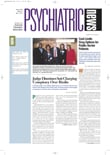The National Institute on Drug Abuse (NIDA) launched a major public health initiative in March in response to a dramatic rise in prescription drug misuse and abuse in the U.S.
As part of the initiative, NIDA released a research report on March 10 that documents the rise of prescription drug abuse in the last few years, explains how to detect and treat prescription drug addiction, and provides information on the adverse health consequences that result from prescription drug misuse.
NIDA’s report cited data gathered by the Substance Abuse and Mental Health Services Administration, which found through its 1999 National Household Survey that there were about 1.6 million new users of prescription pain medication for nonmedical purposes in the previous year.
In 1985 this number was comparatively small—341,000 new users of pain medications for nonmedical purposes. These drugs included codeine, morphine, and percodan, for example.
According to the research, users either did not have a prescription for the medicine or did have one but were using the medication because they liked the way it made them feel. American youth are well represented in the statistics. Data from the survey show a dramatic increase in the number of new users of prescription painkillers for nonmedical purposes aged 12 to 17. In 1985 there were only four people per thousand who began using the painkillers for nonmedical purposes, but in 1998, 32.4 per thousand began using prescription drugs nonmedically.
The problem is also serious among the elderly, according to researchers. NIDA’s report stated that up to 17 percent of adults aged 60 or older abuse prescription drugs.
In an introduction to the report, NIDA director Alan I. Leshner, Ph.D., commented about the susceptibility of the elderly to prescription drug misuse and abuse due to the number of medications they take for different conditions.
“We hope this scientific report is useful to the public, particularly to individuals working with the elderly. . .who may be more vulnerable to misuse and abuse of prescribed medications.”
The report calls for physicians, nurse practitioners, physician assistants, and pharmacists to help prevent prescription drug abuse in people of all ages.
It advises that physicians routinely screen for substance abuse when taking a patient’s history. The assessment should incorporate questions about what prescription and over-the-counter medications the patient is taking and why.
Pharmacists should provide clear information to patients about how to take a medication appropriately, as well as telling patients about possible drug interactions and side effects to which they should be alert, the report stated. NIDA also distributed 400,000 postcards with messages about the dangers of prescription drugs as part of the new public health initiative.
The cards went to restaurants, college campuses, bookstores, clubs, coffee shops, and gyms, for example, in six major cities across the U.S.—Los Angeles, San Francisco, Seattle, Miami, New York, and Mesa, Ariz. The report noted that Mesa is one of the largest retirement communities in the U.S.
Joining NIDA in the initiative are other national organizations such as the American Pharmaceutical Association, American Association of Retired Persons, and American Academy of Family Physicians (AAFP).
AAFP representative and board member Karla Birkholz, M.D., relishes the opportunity to advance understanding of prescription drug abuse. “It’s a chance to develop some guidelines and information that we can bring back to our members about prescription drug misuse and abuse,” Birkholz said.
Since many AAFP members have patients with chronic pain, the issue of abuse and misuse is an important one, according to Birkholz.
“The larger problem for our members is that they may undertreat chronic pain because they fear that [the patients] will misuse or abuse the pain medications,” she said.
Birkholz emphasized the value of education for family physicians about detection and treatment of prescription drug misuse and abuse.
The NIDA research report, “Prescription Drugs: Abuse and Addiction,” is posted at www.drugabuse.gov/ResearchReports/Prescription/Prescription.html.▪
